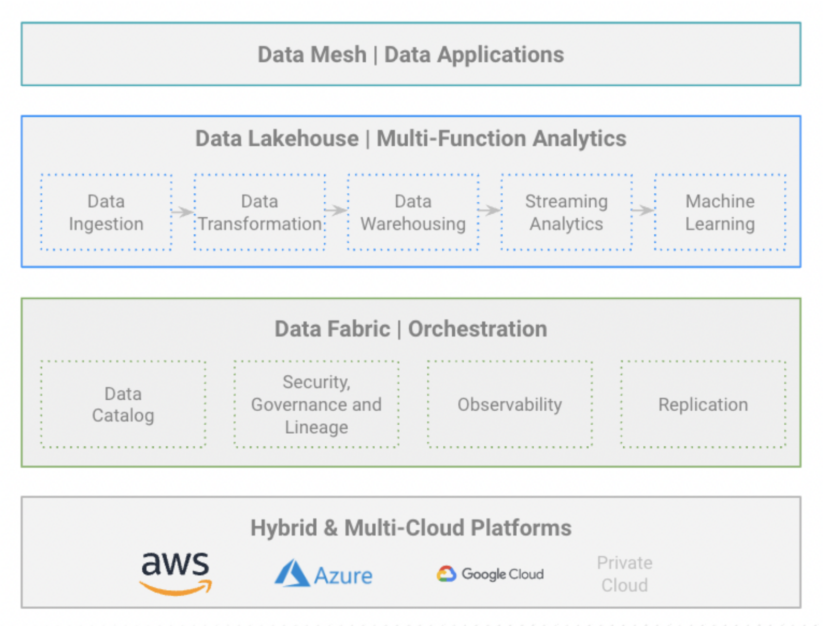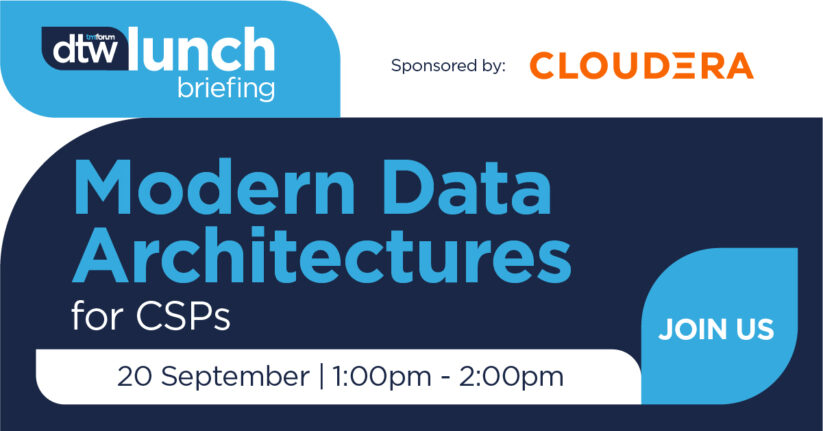In the wake of the disruption caused by the world’s turbulence over the past few years, the telecommunications industry has come out reasonably unscathed. There remain challenges in workforce management, particularly in call centers, and order backlogs for fiber broadband and other physical infrastructure are being worked through. But digital transformation programs are accelerating, services innovation around 5G is continuing apace, and results to the stock market have been robust.
The challenges
Data has continued to grow both in scale and in importance through this period, and today telecommunications companies are increasingly seeing data architecture as an independent organizational challenge, not merely an item on an IT checklist.
The reasons are many—enterprise client demand, the centrality of AI and automation, and digital channel transformation are three of the top drivers. The type of data structures that are being deployed, however, don’t look like those that we’ve seen in the past.
Previously, there were three types of data structures in telco:
- Application-based datasets—i.e. billing or contact center support systems
- Entity data sets—i.e. marketing data lakes
- Ad hoc projects—often set up as “shadow IT,” either on-prem or (most likely) in the public cloud
There were many of these structures across the business, multiples for each acquisition, each line of business, and each executive structure. The result has been an extraordinary volume of data redundancy across the business, leading to disaggregated data strategy, unknown compliance exposures, and inconsistencies in data-based processes.
If you’re working in a telco today, what’s your digital strategy to tackle these challenges?
Why telco should consider modern data architecture
What is the rationale for driving a modern data architecture? There are a few catalysts:
- The journey to the cloud: Telco companies are reassessing their IT infrastructure and seeking more cost-efficient operations by maximizing public cloud deployments.
- Security and compliance requirements: New regulations are prompting questions like “Do we have exposure?” and—more worryingly—“how can we be sure?”
- Disaggregated silos: With highly atomized data assets and minimal enterprise data governance, chief data oofficers are being tasked with identifying processes that can reduce liability and offer levers to better control security and costs.

There are three major architectures under the modern data architecture umbrella.
- Optimization Data lakehouse is the platform wherein the data assets reside. This is not a single repository, nor is it limited to the storage function. It is an edge-to-AI suite of capabilities, including edge analytics, data staging, data quality control, data visualization tools, and machine learning. It comprises data applications and transformation functions as well as maintaining relations between public cloud and on-premise assets. The data lakehouse is a platform that exposes its functions across the business, enabling multiple stakeholders to engage with enterprise data assets, and build data products. Cloudera customers like MTN created a 360 degree view of subscribers by unifying data from different operator systems with data lakehouse. The capabilities to better utilize and analyze performance data have increased MTN’s cell coverage and its net promoter score while decreasing customer turnover and drop calls.
- Orchestration Data fabric is the primary orchestration and governance layer, again not necessarily a single system or a single environment, but a suite of tools, capabilities, and processes that bring order to the data assets. The data fabric should operate across clouds, public and private, and enable enterprise-wide deployment of enterprise data policy. The data fabric drives compliance, security, and change in the data architecture.
- Reorganization Data mesh is a business-level structure that includes people and business drivers for top to bottom data products—either for consumption by the business itself, like customer retention, or as part of an offering to enterprise clients and partners, like IoT data services. Crucially, the data mesh links the fabric and the lakehouse to the highest levels of the business, to LOB leaders, and enables the deployment of data as a strategic asset rather than a mere cost.
Modern data architecture on Cloudera: bringing it all together for telco
With almost 1ZB in total under management, Cloudera has been enabling telecommunication companies, including 10 of the world’s top 10 communication service providers, to drive business value faster with modern data architecture.

The Cloudera Data Platform (CDP) enables modern data architectures with data anywhere at the telco scale. Combining legacy big data technologies with hybrid cloud design and advanced AI and analytics in a fully governed open platform, CDP has become the choice of the world’s largest communications service providers, for the world’s largest telco data workloads.
Key design principles include:
- Multi-cloud and on-premises Cloudera is the only hybrid data platform that spans multi-cloud and on-premises data management and analytics. This allows the persistence of PII and other sensitive data on-prem while taking advantage of the benefits of the public cloud.
- Written once and run anywhere Cloudera’s portable, interoperable data services enable multifunction analytics that can be written once and run anywhere. This minimizes the cost of application migrations and shortens the time to market for new data products.
- Unified security and governance Cloudera Data Platform enables secure, open data management and governance across on-premises and multi-cloud while leveraging open (and cloud-native) storage formats for maximum openness and interoperability through the Cloudera Shared Data Experience (SDX).More global telco companies like LG Uplus, Deutsche Telekom, and Vodafone Automotive continue to build their data futures on Cloudera. Read their stories and more on cloudera.com/telco.

At this year’s TM Forum Digital Transformation World on September 20 to 22, Cloudera will be hosting a dedicated session on Modern Data Architecture for telco, and making contributions to a data governance masterclass, sessions on the challenges of hybrid data clouds, showcasing a catalyst on AI@Scale, and several other areas.
REGISTER HERE and schedule a meeting there with Cloudera!



